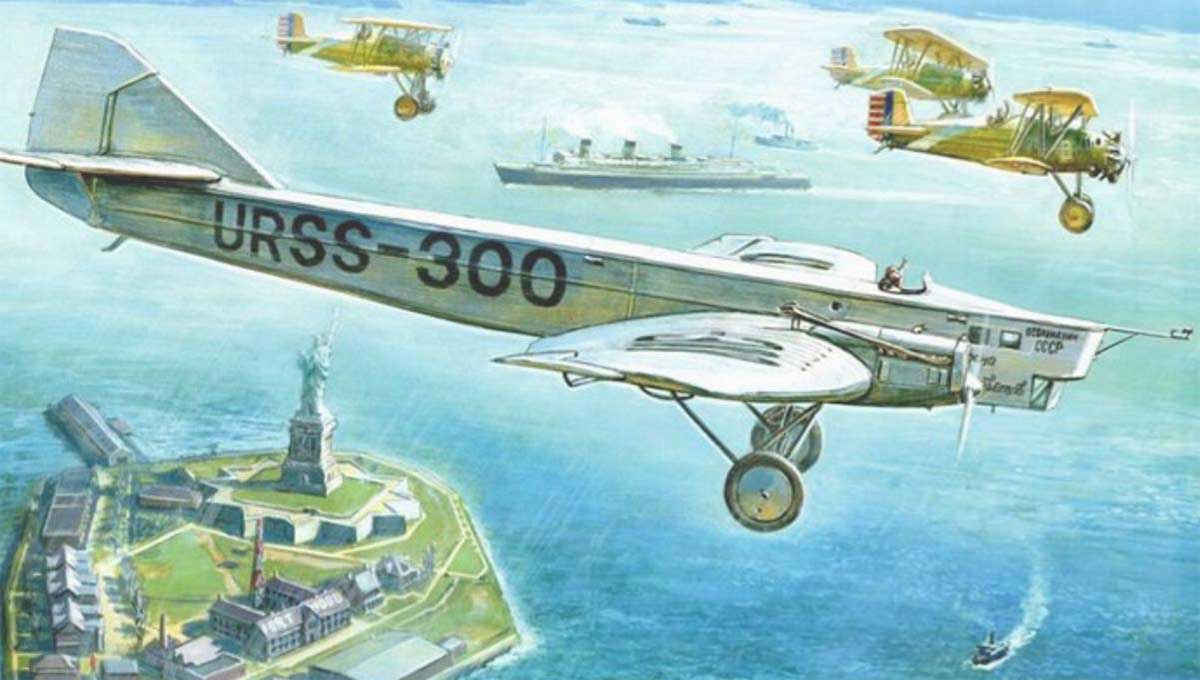Time has always been and remains an important and unusual phenomenon for a person.
The SGG Editorial Group knows the value of time and prioritizes sharing only valuable information which can be of interest for general readers.
In our everyday life we are surrounded by things which are familiar to us yet they embed unique mankind achievements and allow us to communicate easily with our loved ones, reduce distances and obtain pieces of important information in a twinkling of an eye.
The idea of a flight that accompanied the human progress has led to intense development of aerial vehicles, comfortable and rapid movement over large distances that are difficult to imagine.
The idea of a flight that accompanied the human progress has led to intense development of aerial vehicles, comfortable and rapid movement over large distances that are difficult to imagine.
Aviation workers know their biographies, and some of them even were lucky enough to get acquainted with founders and legendary designers of helicopters, airplanes, and unique airplane engines.
"To catch up with the system well ahead of you, you should intercept it rather than run after it."
A catchy Italian name of Roberto Bartini would rather be associated with a fashion designer or a luxury villa in the Mediterranean, than with a brilliant Soviet aircraft designer whom Sergey Korolev and Mikhail Simonov named their teacher.
The entire life of Bartini was full of secrets and mysteries. Born in Croatian town of Fiume in the northern part of Dalmatia, Roberto was raised in the well-to-do family of Lodovico Oros de Bartini, the Lieutenant Governor of Fiume, according to a legend. In his young days, he made considerable progress in sports, foreign languages, mathematics and physics.
By an amazing coincidence, the Bartini's family coat of arms displayed two birds, a red one and a black one.
The bearing in Italian stated: "A red bird will always outshine a black bird." The event that affected him the most and decided his future life-long career was the air show of aviator Khariton Slavorossov, which prompted Roberto Bartini's father to present an airplane for Roberto's 16th birthday. However, the teenager's hobby did not last long, and in a year Bartini was sent to the army at the front of the First World War and captured by the Russians.
After returning home, Roberto found himself to be a heir of his father's multi-million capital. However, being committed to the communist ideas of social justice, he donated all the wealth to the Communist Party of Italy.
One of the legend states that in 1922 Roberto Bartini found himself in the USSR after he performed the task of the Central Committee of the Italian Communist Party to provide assistance to the young aviation industry.
In the USSR, Bartini worked at Khodynsky aerodrome as a technician-photogrammetrist and was keen on methodology of the communism building. Craving for knowledge and new competences, Bartini had a command in some fields far beyond the aviation such as literature, piano playing, painting and linguistics. All of those things helped him to progress in the aviation, and in 1928 he became a technical expert and a pilot and later a chief designer of Aircraft Manufacturing Plant No. 240. Aviation competences were in great demand in the USSR, and Soviet authorities decided to make secret of many aviation projects which were supervised by a little-known strong-willed person whose name was Dunayev. Projects of Roberto Bartini were also a top secret at that time.
"He wore an expensive grey suit and foreign shoes the same color as the suit. He had his grey beret cocked jauntily over one ear…" This is a description given by Mikhail Bulgakov to the character of his novel The Master and Margarita. Strange though it may appear, this description matched completely the portrait of Roberto Bartini.
"He wore an expensive grey suit and foreign shoes the same color as the suit. He had his grey beret cocked jauntily over one ear…" This is a description given by Mikhail Bulgakov to the character of his novel The Master and Margarita. Strange though it may appear, this description matched completely the portrait of Roberto Bartini.
One more myth associated with the distinguished Soviet aircraft designer was the creation of a stealth aircraft. Soviet aviation historian Sharov claimed that such a plane existed in a single copy at the military base at the vicinity of Vologda. Aircraft designer Bartini managed to create a stealth aircraft of plexiglass which thanks to its mirror surface changed the refraction index making the airplane invisible. This project was like many others subject to the top secrecy, and all documents and the airplane itself disappeared without a trace.
Under the guidance of Bartini, one more interesting aircraft was designed named DAR ("gift").
The aircraft was specifically designed for performing surveillance tasks in the severe climatic conditions of the Artic Region. Upon the flight tests, then famous polar pilot Chudnovsky named the aircraft a truly unique thing. Equipped with powerful engines of almost 1,000 h.p., the aircraft was able to take off from and land on water, snow and ice. However, these far-reaching plans never came true. Lack of mass production was due to inability of the Soviet aviation industry to arrange sophisticated manufacturing processes rather than the non-standard flight characteristics of the aircraft.
In 1939, the Soviet aviation set an officially recognized world record. An aircraft having "steel" name "Stal-7" set a time record covering the distance of 5,086 km in 12.5 hours. At the time of this success, aircraft designer Bartini was in prison as a "public enemy". The great aircraft designer held up well and even in prison managed to improve Stal-7 aircraft and transformed it into legendary bomber aircraft DB-240. This bomber made first raids to Berlin, however, it was then named ER-2 after aircraft designer Ermolayev. Bartini was not afraid of losing his undertakings or the absence of fame. He was full of ideas and initiatives and lived for their improvement generously sharing them.
He was always ahead of time. In the beginning of 1940-s, he developed super-fast interception jet aircraft R-114 which was characterized by leading national aircraft designers as "an impossible thing, flying without a rotor". New Bartini's project found the same fate as his other creations. The Soviet industry was again unprepared for an unconventional scientific idea.
He was the only aircraft designer in the world who calculated the parameters of fuselages of his creations with such precision that they even did not need to be tested in a wind tunnel. According to the experts, airplanes designed by Bartini were always far-fetched and ahead of his time. Amphibious aircraft capable of taking off vertically, speed records and the first concept of ekranoplan — this just starts the list of inventions of Bartini's genius. A jet fighter with variable geometry wing and the first double arrow-head wing being a breakthrough in the global aviation were invented by Bartini as well.
A wall in the Moscow flat of Bartini was decorated with his own painting of a rocket launch. The irony is that in 1947 no one could imagine the first launch of a space rocket. Bartini designed more than 60 aircrafts, but only five of them were built and a single one went to mass production.
It may be said without exaggeration that the global aeronautical engineering still uses the ideas of great Bartini and implements them in practice successfully. The Soviet Italian was committed to great ideas of aviation until his death, despite reprisals, hardships and conflicts with the guild fellows.
One night in 1974, Roberto Bartini felt the approach of death and wrote a will where he asked to place all his papers in a zinc case and open it in 2197. In the will, he stated: "I have removed one conclusion from my articles about constants. At any time when you find it appropriate, please announce in any form, at your option, that I, Roberto Bartini, came to this conclusion mathematically. However, I am not sure that there are no mistakes, that's why I have not published it.
This conclusion needs checking, and I have not enough time left. The conclusion states: the amount of life in the Universe, that is, the amount of matter that suddenly saw itself and its environment in the past infinitely distant from us, is also a constant value. A global constant. But, of course, for the Universe, and not for a single planet… Which means we will meet again."
To conclude, the SCG Editorial Group would like to express sincere appreciation to the persons who collect pieces of information about the life of Roberto Bartini. The searching for non-standard solutions in the aviation industry means a new path to progress, hence, an impetus to development of engineering occupations, industrial practices and a symbiosis of men of genius, even if they are not aviators!



